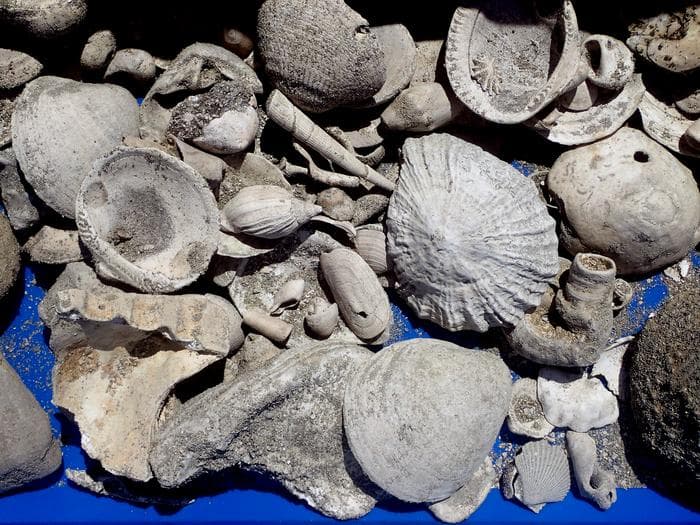
Fossil treasure trove found in Auckland contains at least 10 new species
In 2020, Auckland’s Watercare – New Zealand’s largest water utility – excavated two huge vertical shafts from beneath the Mangere Wastewater Treatment Plant in order to upgrade a major pipeline which brings raw sewage for treatment from the central areas of the city.
To their surprise, the excavations revealed a fossil treasure trove, consisting of 266 species of three-million-year-old fauna.
Previously unknown species
This extraordinary finding – described in a recent article published in the New Zealand Journal of Geology and Geophysics – represents one of the richest and most diverse group of Late Pleistocene fauna ever discovered in New Zealand. The experts estimate that at least ten previously unknown species will soon be described and named.
Once they were informed of the significance of the fossil deposit, Watercare and their contractors dumped an enormous heap of shelly sand in a nearby paddock so that a team of paleontologists could thoroughly examine it over many months.
Once-in-a-lifetime find
The experts analyzed more than 300,000 fossils, from which several thousands were taken to the Auckland Museum as a record of a “once-in-a-lifetime find,” as lead author Bruce Hayward, a principal scientist at the Geomarine Research in Auckland, put it.
“Detailed identification of the fossils shows that they were deposited between 3 and 3.7 million years ago in a subtidal channel in an early version of the modern Manukau Harbor,” said Hayward.
“At that time, sea level was slightly higher than it is today as the world was also several degrees warmer than now. As a result, the fossils include a number of subtropical species, whose relatives today live in the warmer waters around the Kermadec and Norfolk islands. At least ten previously unknown species are present and will be described and named in future work.”
Surprising findings
Hayward said it is surprising that the fauna contains fossils that lived in many different environments that have been brought together in the ancient marine channel by wave action and strong tidal currents.
“It includes ten specimens of the iconic NZ flax snail that must have lived on the adjacent land and been washed down into the sea by storm runoff,” noted Hayward.
“These are by far the oldest known flax snails in the world. Most of the fossils lived on the sea floor, some in brackish estuaries, others attached to hard rocky shorelines and still more have been carried in from offshore of the exposed west coast at the time.”
Rare fossils
Some of the rarest findings from this collection include isolated baleen whale vertebra, a broken sperm whale tooth, the spine of an extinct sawshark, the dental plates of eagle rays, and a variety of great white shark teeth.
In future research, the experts plan to formally describe the new taxa, comprehensively investigate its paleoecology, and compare these fossils to those discovered in other locations in New Zealand, such as Otahuhu, Kaawa, and Whanganui Basin.
Image Credit: Bruce Hayward
—
By Andrei Ionescu, Earth.com Staff Writer
Check us out on EarthSnap, a free app brought to you by Eric Ralls and Earth.com.
.












